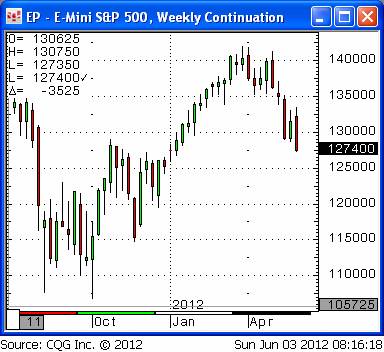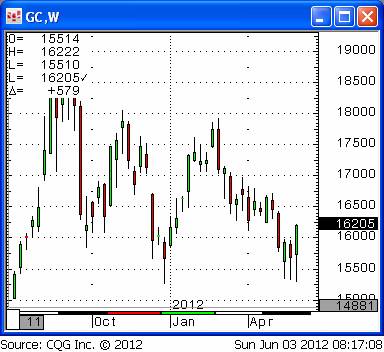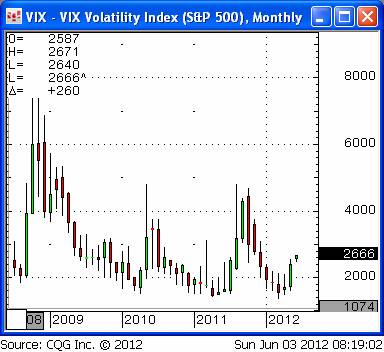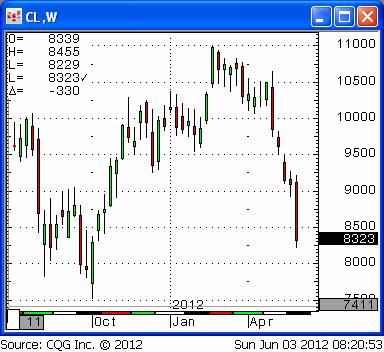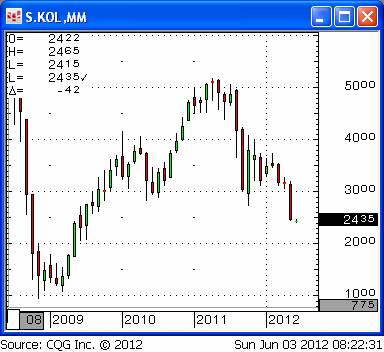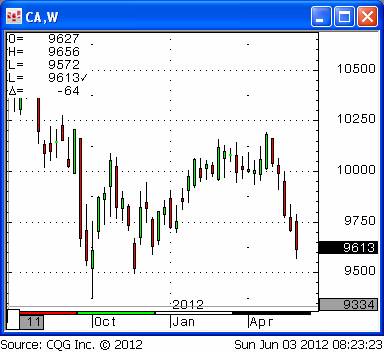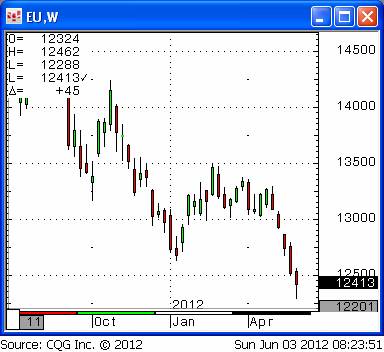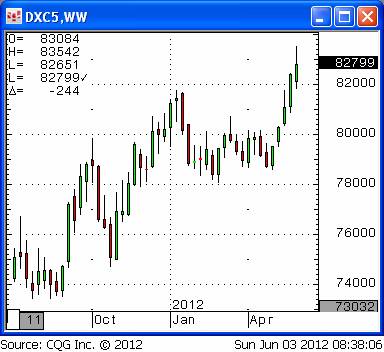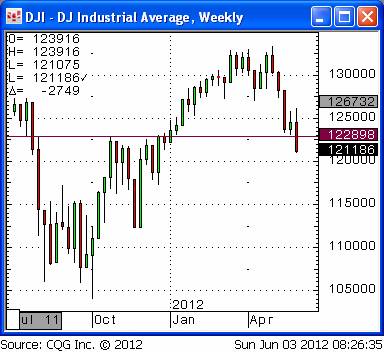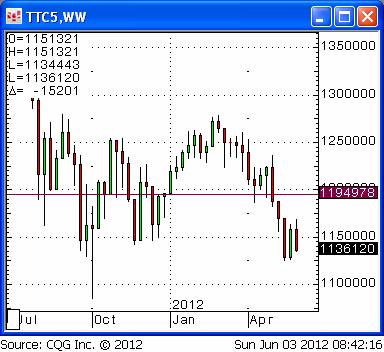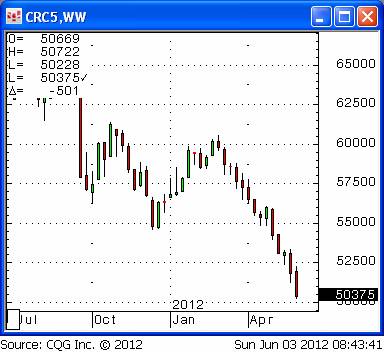Is gold preparing for another shot up to $2,500/ounce heights or on the way down after being overbought? In this exclusive interview with The Gold Report, two respected names in the investing world share their arguments for what could happen in the coming years and how to profit from it. Financial Adviser Peter Grandich predicts a lot more upside while AlphaNorth Asset Management Chief Investment Officer Steve Palmer has a more cautious outlook on the shiny metal. Where are you putting your money?
The Mother of All Gold Bulls
The Gold Report: Peter, you have called this the mother of all gold bull markets and predicted $2,500/ounce (oz) gold prices. What is driving the price of gold? Is it China’s growth? Is it a weak U.S. dollar? Is it global fears? Is it central bank currency printing? What’s going on?
Peter Grandich: This mother of all gold bull markets was built on a foundation of dramatic changes in the gold market itself that began in earnest 10 years ago and propelled it up to where it is now. First, two significant negatives turned into positives. The gold market had basically capped due to constant central bank selling and producers being aggressive forward sellers of future gold production. However, starting with the Washington Accord in 1999, the central banks dramatically changed direction and agreed to limit gold sales. In fact, in the last two years the central banks have actually become net buyers. At the same time, gold producers have made hedging a thing of the past. Hedging has really become a four-letter word among investors.
TGR: What convinced companies to stop forward-selling their production?
PG: The gold market finally started to rise and people realized that companies that were hedging were making less money than companies that were not hedging. In the ’80s and ’90s, the old American Barrick was almost a commodities trading house rather than a gold producer because it used the hedging derivatives to make money. But the great mother bull market made that counterproductive and investors began to shy away from any company that pre-sold gold.
The other factor fueling the bull market for gold is the introduction of exchange traded funds (ETFs). They brought in an enormous amount of new gold buying. In the ’80s and ’90s, institutional investors found it cumbersome to take a large position in gold. Physical gold purchasing was not only expensive, it involved storage costs and carrying costs. People tried to use mining shares as a proxy until they realized that when the market went down, mining shares went down with it. ETFs allow people to have direct exposure to the gold price. ETFs also offer tremendous liquidity and the ability to sell at reduced costs intraday.
Central bank gold selling, lack of hedging and the creation of ETFs are the main reasons why the gold bull market has done what it has done. The gold permabears who have not recognized these changes have missed out.
TGR: Will those conditions continue?
PG: There is no sign of change. In fact, despite the permabears cries to the contrary, we saw in the first quarter that central banks continued to be net buyers. I suspect that when the second quarter is over, we will see that central banks stepped up again as buyers.
TGR: So, why are you predicting $2,500/oz? Why not $2,000/oz or $5,000/oz or $10,000/oz?
PG: I’m actually not a big fan of a target number. I’m more interested in the direction of the gold price. My feeling during this price rise has been that gold will eventually reach not only a nominal new high in price, but an inflation-adjusted, all-time high. Right now that is somewhere in the $2,300-2,500/oz area depending on what factor you use for an inflation rate. And, that’s what I think is the minimum target that we can look for before this great bull market even comes close to an end.
TGR: How do you respond to people who say that gold doesn’t really have any value, that it’s not an industrial metal and its value is arbitrary?
PG: I give them a very simple answer. I have thousands of years of history on my side. Mankind, for whatever reason, over thousands of years has seen many paper currencies come and go. Regardless of the economic framework, gold was used to buy the things that were important while other means of value went by the wayside.
A hundred years ago an ounce of gold bought a good man’s suit and it still does. There isn’t really anything else I could point to, financial assets or oil, wheat or any other commodity that has managed to do that. So, I think it’s absurd when people say gold doesn’t have value.
TGR: What about the people who say it’s in a bubble? How will you know when gold is overbought? What are some indicators that you watch?
PG: The definition of a bubble of any kind is when so many people have gotten so involved in something that it has been driven beyond any reasonable price. This gold market has surprised us in how high it has gotten with so few members of the general public and the professional community investing in it, particularly in North America. If this is a bubble, bring more on for me because there just aren’t enough people participating in this. The only bubble I see is in the number of people predicting the end of the gold bull market. That is overloaded. Gold is not.
TGR: Well, it sounds like you are definitely bullish on the gold commodity price, but what about equities? Are equity valuations too low or too high based on where the gold price is now and where it could go?
PG: There has been a dramatic change on the equity side with some bearish developments. I’ll go through them with you.
The first change as we discussed was the shift to ETFs for exposure to the gold price. The single biggest change, particularly in the junior resource sector, has been the adjustment in the financial industry from a commission-driven business to an asset-gathering business. A decade ago, thousands of so-called financial stockbrokers built their books of business on buying and selling individual stocks. Some of them specialized in mining shares. Each one would have 100 to 500 or 1,000 clients. That created a market for mining and exploration companies to get exposure to the end-user. That is all but gone now. Most people in the financial industry today are asset gatherers. They gather an asset, turn it over to a third party money manager and the individuals no longer buy or sell or recommend individual stocks. That has been the single biggest hit to our market.
The other thing that changed dramatically is the regulatory and compliance environment. In North America, the NI 43-101 rule required companies to follow specific reporting guidelines in order to classify exactly what kind of reserves or potential reserves they may have. Before that went into effect, companies could almost say anything, sizzle their story into looking like steak if you will. While it was a good change in many ways, it also removed all the sizzle. Companies are now very limited to how they can describe their resource, thus limiting some stock price growth.
The regulatory end changed as well. In the United States, it’s almost impossible to find a brokerage firm that would allow solicited or even unsolicited orders on stocks that are not trading on the major markets, the New York Stock Exchange or the NASDAQ. Even though the Toronto Stock Exchange may be the fourth or fifth biggest exchange in the world, it’s very difficult for U.S. investors and the investment community to buy and sell stocks that trade there because compliance departments don’t allow it any more.
The holding time for private placement is something else that has changed. Private placements are the life blood to the junior resource market. It is where companies raise money to continue drilling and exploring. When I first entered the business, placements came with a two-year hold. Then it became a one-year hold and now it is only four months. A four-month hold brings more paper into the public trading market faster than most companies can demonstrate results. Therefore, it has become a depressant because that stock is getting ahead of company growth.
Add to the challenging equity picture the emergence of discount brokerages. Many individuals can literally trade for a penny or two share movement and make money. Before people had to have a 10% or 20% move in the stock before they would even consider taking profits. Now they think nothing of trading multiple times a day.
Throw in the political difficulties that mining companies have around the world, environmental and now even labor shortages, and you can see why there is a disconnect. Those are some of the reasons why even though we have had a three-, five- or even sometimes tenfold increase in underlying metal prices over the last couple of decades, but it is far more difficult now for the typical mining company to realize increased stock prices. It is far more difficult today for the typical mining exploration company than in any other time in the 30 years that I have been around them.
TGR: Do you see that changing? How will the demand for gold be fulfilled if it isn’t profitable to pull it out of the ground?
PG: That is going to be a challenge. The bears have predicted that 80% of juniors are going to be wiped out because the gold price is going to go so low. That would mean 80% of the gold that might have been found will not be. That would actually improve the fundamentals for the gold price by decreasing supply.
What will happen is what happens in all cycles. Juniors don’t really die. They become born again. They recapitalize. They change names. They may even change properties. But they never truly die.
The world is going to need new cars and electronics and that will require metal and energy and mining companies to find those materials. More than 80% of metals found in the world are found by small companies. If they are not around, who is going to discover the ore to build the world of tomorrow? That is why I still maintain a very bullish attitude toward commodities in general.
Add in the pressure for a store of value safe from increasing world debt and political turmoil and you have a strong argument for gold. So, it’s not because I wear a tinfoil hat or sell log cabins or dry food that I’m bullish on gold. I’m bullish on gold because all the fundamentals point toward it still going dramatically higher.
TGR: If the juniors are having trouble finding love in the stock market during these record-high gold commodity prices, what about the producers? Are they reaping the benefits of a higher gold price?
PG: Not to the extent that they should be in the short term, but I know it will be all right long term. My bellwether is Barrick Gold Corp. (ABX:TSX; ABX:NYSE). It has gotten to a single digit price-to-earnings ratio. This was unimaginable when I first entered the business because mining shares traded anywhere from 30 to 50 multiples. When a major producer is below a general market multiple, but continues to do well on the corporate side, that is where the undervalue is in the general market. So, I think we’re pretty well done in this corrective/bear market phase for mining shares. People have priced companies to a level where gold might have been 10 or 15 years ago. So, either the gold price has to come way down to match that or these things have been way overdone on the downside. I’m in the latter camp.
TGR: Do you have a bellwether for the juniors if Barrick is your bellwether for the producers?
PG: It is a much more difficult environment for the mining and exploration business than it was 20 years ago, even though the metals themselves have gone up a lot. Throw in all the political risk and the environmental, social, economic and financial challenges and I would have to say, “If I had a child I wouldn’t want it to be a junior resource company because it has so many things going against it.” So many good juniors like Sunridge Gold Corp. (SGC:TSX.V) have net asset values at multiples of their market cap. But those things happen at the bottoms of markets, not the top. The first focus of the market when it rebounds is on the companies that got way overdone. There will suddenly be a recognition that not only will they survive, but they will prosper because there will be less overall competition.
Sunridge is a classic case. It has positive news with new studies, a feasibility study and lots of new value created. There are lots of Sunridges out there. That is why I believe anyone who thinks there is a lot more to the downside in the junior market is badly mistaken.
Let me be clear: I do not expect a V bottom. I’m looking for an L bottom. We won’t go dramatically up and it will take several months for confidence to build again through mergers and recapitalization.
TGR: You started trading more than 30 years ago. You have been through the wild ride of the ’80s and ’90s. What is the best advice you’ve ever received?
PG: Hope is a wonderful spiritual personal strategy to have because without it, it’s very difficult to live. But, hope is a horrible investment strategy. When all you have is the hope something is going to get better or if I hope I get my money back rather than relying on fundamental and/or technical factors to justify that hope, then it’s a very poor investment strategy.
The ultimate crime in investing is not being wrong, it’s staying wrong. I had to look at myself in the mirror a couple of weeks ago and say, have I made that mistake? Have things really changed in the metals and mining industry? Have I ignored the facts because I make a living in the market? Do I need to stop being wrong? I made a conscious decision after evaluating everything that this was just another of the corrections that occur. That isn’t hope. That is reality.
A Muted View
TGR: Steve, your AlphaNorth Partners Fund is a long-biased, small-cap hedge fund focused on Canadian companies. You’ve been on the buy side since 1997 and adjust your outlook and portfolio based on fundamental and technical analyses. In the last year, you have shifted to a more bearish outlook on gold and bullish outlook on equities. What changed your mind?
Steve Palmer: I’ve had a relatively muted view on gold for a couple of years now, not so much anymore though given the underperformance of both bullion and gold equities over the past couple of quarters. I’m not so much negative right now but, rather, I believe that there are better opportunities to invest in. So, in terms of new companies to invest in, the last sector that I would be looking in would be gold.
TGR: Is there some technical indicator on which that conclusion is based?
SP: I noticed that almost all investors had become unanimously bullish on gold, so sentiment was at an extreme. It’s not quite as bad now with the underperformance in the last couple of quarters. But everybody you talked to was bullish on gold, and if you didn’t think gold was going to multi-thousand dollars per ounce, they stared at you like you were from outer space.
The valuations of gold stocks were way out of line with other resource companies. They have underperformed considerably of late though, so that’s more in line now. But it used to be that companies like Goldcorp Inc. (G:TSX; GG:NYSE) and Barrick Gold would trade at 30x earnings while Teck Resources Ltd. (TCK:NYSE; TCK.A:TSX) and Alcan Inc. [purchased by Rio Tinto (RIO:NYSE) in 2008] would trade at 9x earnings. That didn’t make any sense to me. That valuation discrepancy has largely been corrected at this point, so I’m not as negative on those anymore.
That leaves two reasons why I remain not bullish on gold. There is still a lot of retail money that believes in gold as something that they need to own to protect against whatever is going to happen—inflation, deflation, death, whatever. It seems to be a cure-all for everything. The supply-demand picture on gold is not favorable. It’s the retail money that has basically propped up the gold price, all the ETFs that have been created to hoard gold. I saw some data that investment demand over the last 10 years has increased 17% while total demand for gold is up only 1%. So that implies that fabrication demand, a real end-use demand, for gold is negative, negative 20% over that time. If you took away the investment demand, the picture for gold would be a totally different story. We’ve seen many times before how retail piles into an asset class, creates a bit of a bubble and when it gets out, it causes significant correction.
TGR: What do you think is a reasonable price for gold?
SP: I don’t know. Because there are so many factors and variables, it would just be guesswork. It all depends on what the sentiment of the retail investment does that’s going to drag gold. I don’t know the timing of that. So I use technical analysis to predict shorter-term swings. I know there will be a big bust in gold at some point, but I don’t know when it’s going to occur.
I think it will still go up this year along with the other commodities, but it’s unclear what will prompt the big downturn in gold. I would imagine at some point, if the equity markets are generating decent returns as I think they will, investors will re-evaluate their portfolios and wonder why they’re holding gold, which is only costing them money because it doesn’t generate any return like a bond or a stock with a dividend. It just costs money to store it.
TGR: When you say a big bust, how big of a dip could it be?
SP: It could be in half. A few months ago we saw gold drop $100/oz in one day. That just gives you a sampling of what could happen when things unwind.
TGR: What impact will any quantitative easing (QE) 3 or inflation have on your projection?
SP: In the short term, the markets believe that QE3 will be positive for gold. It remains to be seen whether QE3 happens or not. It would be beneficial to gold over the following few months if it were to occur.
TGR: You’ve called your “muted” view on gold an out-front, lonely maneuver, quoting Army Colonel John Masters: “Only if you are far enough ahead to be at risk do you have a chance for large rewards.” How far ahead do you try to go?
SP: Not too far. Time is often the most difficult component to predict. In my mind, there is no question that there will be a big down-move in gold. It’s just getting the timing right that is difficult. So I don’t put on positions, hoping for something like that, waiting two to three years for it to happen because a lot can happen in the shorter term. On occasion when the technicals looked very unfavorable, we have shorted it.
TGR: Are you short gold now?
SP: Currently, we are not short. I don’t think a collapse is going to happen this year.
TGR: You mentioned that one of the signs that gold was overvalued is that everyone was investing in gold. Do you consider yourself a contrarian?
SP: Yes. I try to be whenever possible because that speaks to that quote you just mentioned. If you’re always doing the same thing as everyone else, you’re not going to stand out in terms of performance. You’re just going to generate the same returns as everyone else.
TGR: Has it been working for you?
SP: So far it has been working, yes.
TGR: What were your returns last year?
SP: Last year, we were +2.4% in the AlphaNorth Partners Fund. The Toronto Stock Exchange Venture Index was -35% and most of the small caps were negative for the year, so I consider that a big win.
TGR: In December 2011, you said, “Our strategy of avoiding the precious metals sector has added value over the last couple of quarters as gold and silver remain entrenched in the downtrend. Both of these commodities peaked in the summer and have continued to hit new lows since that time. We prefer to invest in other sectors with more favorable supply-demand fundamentals.” It looks as if you’ve reduced your precious metals holdings from 11% to 6% of your holdings, but you still hold 20% in industrial metals. Are you more upbeat about copper and nickel?
SP: Yes, I am.
TGR: Why is that?
SP: Gold is not really used for any meaningful purpose other than jewelry, which is not a critical item, whereas many of these other commodities are. Once you use oil or copper, it is gone. Gold just sits around.
TGR: So are those industrial metals more dependent on global economic trends?
SP: Yes. The biggest factor would be Chinese growth.
TGR: Are you worried about slower growth in Asia?
SP: I think the concern over Chinese growth rates is overblown in the short term. I find it funny that the concern a few months ago was inflation in China. Inflation was getting out of control, so the government instituted some policies to control the growth and make sure inflation didn’t become a problem. It was successful, but now everyone is complaining about the growth slowdown.
TGR: Other than industrial metals, what sectors do you see as more favorable and why?
SP: I have been focusing on the energy sector, the major base metals, specialty metals like graphite—those stocks have all been performing very well lately—iron ore, coal, all those types of commodities. The supply-demand outlook is much more favorable. You don’t have a looming potential risk of all of the retail money unwinding out of the ETFs.
TGR: If you were to give our readers some investing advice for the rest of 2012, what would that be?
SP: I view this year as the time to buy on weakness. Don’t get whipped by the headlines about the end of the world. There are always problems. When the news is bad is the time you should be adding to positions. Once these positions have a significant move as we saw from October to January, when the Standard & Poor’s index was up over 20%, you should take some money off the table.
Financial Adviser and Market Analyst Peter Grandich started publishing The Grandich Letter—now a blog—without a high school diploma or even a day of formal training. His ability to interpret and forecast financial happenings, which once earned him the moniker “Wall Street Whiz Kid,” has led to hundreds of media interviews. He is regarded as one of the world’s foremost market strategists. He’s also published a new book called Confessions of a Wall Street Whiz Kid.
Steve Palmer is a founding partner and chief investment officer of AlphaNorth Asset Management. Prior to founding AlphaNorth in 2007, he was employed at Canadian Equities, one of the world’s largest financial institutions, as vice president where he managed the Canadian equity assets of approximately $350 million. Palmer managed a pooled fund, which focused on Canadian small-capitalization companies from its inception to August 2007, achieving returns that were ranked #1 in performance by a major fund ranking service in their small-cap, pooled-fund category. He also managed a large-cap fund, which ranked in the first quartile of performance among other Canadian equity pooled funds. From 1997–1998, Palmer was employed as a portfolio manager at a high-net-worth investment boutique. Palmer earned a bachelor’s degree in economics from the University of Western Ontario and is a Chartered Financial Analyst.
Want to read more exclusive Gold Report interviews like this? Sign up for our free e-newsletter, and you’ll learn when new articles have been published. To see a list of recent interviews with industry analysts and commentators, visit our Exclusive Interviews page.


